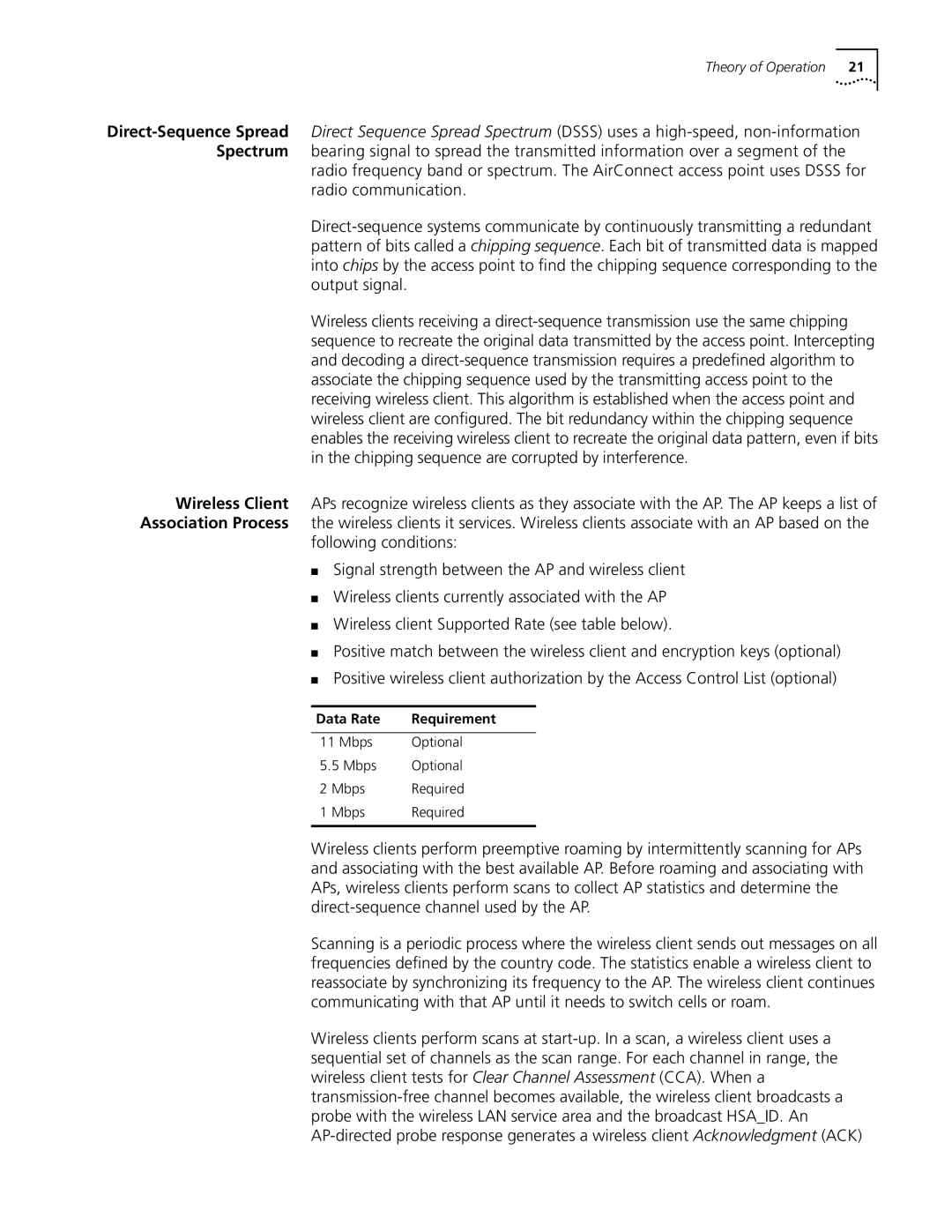Theory of Operation 21
Direct-Sequence Spread Direct Sequence Spread Spectrum (DSSS) uses a high-speed, non-information Spectrum bearing signal to spread the transmitted information over a segment of the
radio frequency band or spectrum. The AirConnect access point uses DSSS for radio communication.
Direct-sequence systems communicate by continuously transmitting a redundant pattern of bits called a chipping sequence. Each bit of transmitted data is mapped into chips by the access point to find the chipping sequence corresponding to the output signal.
Wireless clients receiving a direct-sequence transmission use the same chipping sequence to recreate the original data transmitted by the access point. Intercepting and decoding a direct-sequence transmission requires a predefined algorithm to associate the chipping sequence used by the transmitting access point to the receiving wireless client. This algorithm is established when the access point and wireless client are configured. The bit redundancy within the chipping sequence enables the receiving wireless client to recreate the original data pattern, even if bits in the chipping sequence are corrupted by interference.
Wireless Client APs recognize wireless clients as they associate with the AP. The AP keeps a list of Association Process the wireless clients it services. Wireless clients associate with an AP based on the
following conditions:
■Signal strength between the AP and wireless client
■Wireless clients currently associated with the AP
■Wireless client Supported Rate (see table below).
■Positive match between the wireless client and encryption keys (optional)
■Positive wireless client authorization by the Access Control List (optional)
Data Rate | Requirement |
| |
11 Mbps | Optional |
5.5 Mbps | Optional |
2 Mbps | Required |
1 Mbps | Required |
| |
Wireless clients perform preemptive roaming by intermittently scanning for APs and associating with the best available AP. Before roaming and associating with APs, wireless clients perform scans to collect AP statistics and determine the direct-sequence channel used by the AP.
Scanning is a periodic process where the wireless client sends out messages on all frequencies defined by the country code. The statistics enable a wireless client to reassociate by synchronizing its frequency to the AP. The wireless client continues communicating with that AP until it needs to switch cells or roam.
Wireless clients perform scans at start-up. In a scan, a wireless client uses a sequential set of channels as the scan range. For each channel in range, the wireless client tests for Clear Channel Assessment (CCA). When a transmission-free channel becomes available, the wireless client broadcasts a probe with the wireless LAN service area and the broadcast HSA_ID. An AP-directed probe response generates a wireless client Acknowledgment (ACK)

